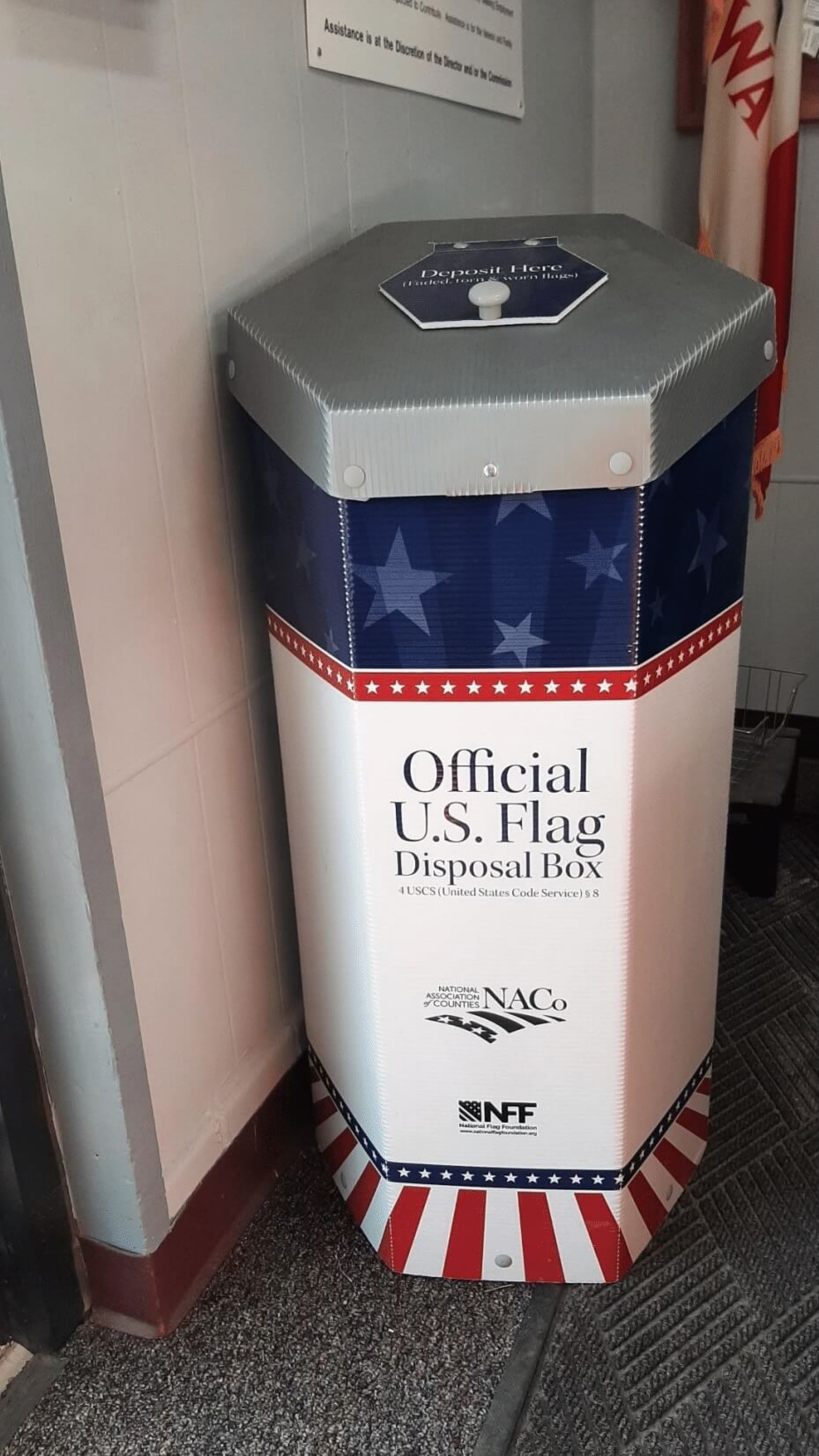Flag Resources
Flag Display Days
- New Year's Day
January 1 - Martin Luther King Day
3rd Monday in January - Lincoln's Birthday
February 12 - Presidents' Day
3rd Monday in February - Easter Sunday
Variable - Mother’s Day
2nd Sunday in May - Peace Officers Memorial Day (half-staff)
May 15 - Armed Forces Day
3rd Saturday in May - Memorial Day (half-staff 'til noon)
Last Monday in May - Flag Day
June 14 - Independence Day
July 4 - National Korean War Armistice Day (half-staff)
July 27 - Labor Day
1st Monday in September - POW/MIA Recognition Day
3rd Friday in September - Constitution Day (Citizenship Day):
September 17 - Columbus Day
2nd Monday in October - Navy Day
October 27 - Veterans Day
November 11 - Thanksgiving Day
4th Thursday in November - National Pearl Harbor Remembrance Day
December 7 - Christmas Day
December 25
The American Flag
Remember to show your love for America, and your respect for our veterans, by displaying our nation’s most sacred symbol on Memorial Day, Veterans Day, Flag Day, Independence Day, and all patriotic holidays.
How to Fly the American Flag - Ten Guidelines
- The flag should be hoisted briskly and lowered ceremoniously.
- The flag is never allowed to touch the ground or the floor.
- When hung over a sidewalk on a rope extending from a building to a pole, the union stars are always away from the building.
- When vertically hung over the center of the street, the flag always has the union stars to the north in an east/west street, and to the east in a north/south street.
- The flag of the United States of America should be at the center and at the highest point of the group when a number of flags of states or localities or pennants of societies are grouped and displayed from the staffs.
- The flag should never be festooned, drawn back, nor up in folds but always allowed to fall free.
- The flag should be displayed at half-staff until noon on Memorial Day, then raised to the top of the staff.
- Never fly the flag upside down except as a signal of distress in instances of extreme danger to life or property.
- The flag is never flown in inclement weather except when using an all-weather flag.
- The flag can be flown every day from sunrise to sunset and at night if illuminated properly.
Flag Disposal
Many Americans proudly fly the U.S. flag at their homes and places of work, but what do you do with it when it's old and ratty and you're ready for a new one? Don't just throw it in the trash like any other old item – that's considered disrespectful. Just as there is etiquette for displaying Old Glory, there's also etiquette for disposing of flags in a dignified manner.
Rules on how to properly fly the flag were established in June 1923, when the National Flag Conference met in Washington. Its members created the Flag Code, which states that "the flag represents a living country and is itself considered a living thing."
The American Legion passed a resolution about flag retirement ceremonies in 1937, and they've been an important ritual ever since. According to the resolution, "The approved method of disposing of unserviceable flags has long been that they be destroyed by burning." The U.S. flag is considered such a sacred symbol that burning it in an undignified manner constitutes desecration. That's why the ceremonies are held in a specific manner.
Flag Disposal Locations
Monona County Courthouse
Annex Basement
610 Iowa Ave.
Onawa, IA 51040
American Legion
211 S. 1st St.
Mapleton, IA 51034
Monona County Veterans Memorial Museum
203 12th St.
Onawa, IA 50140


